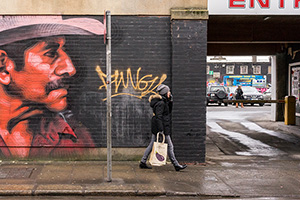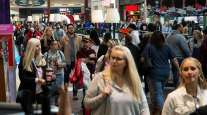Consumers Spend Less Than Forecast as Inflation Bites

Consumer spending rose less than projected in January as rising prices pinched Americans’ wallets, leading inflation-adjusted purchases to fall by the most since 2009.
The 0.2% advance in spending followed a 0.5% increase in the prior month, the Commerce Department reported March 1 in Washington. The median forecast in a Bloomberg News survey called for a 0.3% gain. Incomes rose 0.4%, though inflation-adjusted disposable incomes had the biggest drop since 2013.
The results indicate less momentum early in the year, and a pickup in inflation may further limit faster growth in household spending, which accounts for about 70% of the economy. At the same time, the tight job market and low borrowing costs will continue to support consumers, whose confidence is getting a boost from optimism about lower taxes under President Donald Trump.
“It’s a more moderate start to this quarter coming off of a strong result in the fourth quarter,” said Tom Simons, an economist at Jefferies in New York. “Increasing prices are going to put some pressure on spending. Wage growth hasn’t been so strong that consumers will accelerate spending in the face of rising inflation.”
Even so, “we’re still in a decent enough spot” despite the drop in inflation-adjusted purchases, he said.
The Federal Reserve’s preferred measure of consumer prices climbed 0.4% from December and 1.9% from a year earlier, just shy of its 2% target that was last met in April 2012. The core price measure, which excludes food and fuel, rose 0.3% from the prior month and was up 1.7% from January 2016.
The latest figures follow revised fourth-quarter data released Feb. 28 that showed consumer spending will remain the driver of this economic expansion. GDP rose at a 1.9% annualized rate, with consumption adding even more to growth than previously estimated while business investment and government outlays made a smaller contribution.
Adjusting consumer spending for inflation, which generates the figures used to calculate gross domestic product, purchases fell 0.3% after a 0.3% increase the previous month. The Commerce Department said it was the largest drop since September 2009, when the measure declined 1%.
Forecasts for January consumer spending ranged from increases of 0.2% to 0.5%, according to the Bloomberg survey. The previous month’s reading was unrevised at a 0.5% gain.
The Bloomberg survey median for incomes was a 0.3% gain. December’s figure was unrevised at a 0.3% advance.
Disposable income, or the money left over after taxes, decreased 0.2% after adjusting for inflation, breaking a more than three-year streak of monthly gains. It rose 0.1% in the prior month.
The saving rate increased to 5.5% from 5.4%. Wages and salaries rose 0.4% for a second month.
In January, household outlays on services fell 0.2% after adjusting for inflation. The category includes tourism, legal help, health care and personal care items such as haircuts, and is typically difficult for the government to estimate accurately.
Purchases of durable goods, which include automobiles, also fell, decreasing 0.8% after adjusting for inflation. That’s the biggest drop since August and follows a 1.8% increase.
Central bankers, scheduled to meet March 14-15, are watching for signs that inflation is making progress toward the central bank’s 2% goal. On Feb. 28, two influential Fed policymakers, William Dudley and John Williams, signaled a greater willingness to tighten monetary policy, perhaps as soon as this month.



